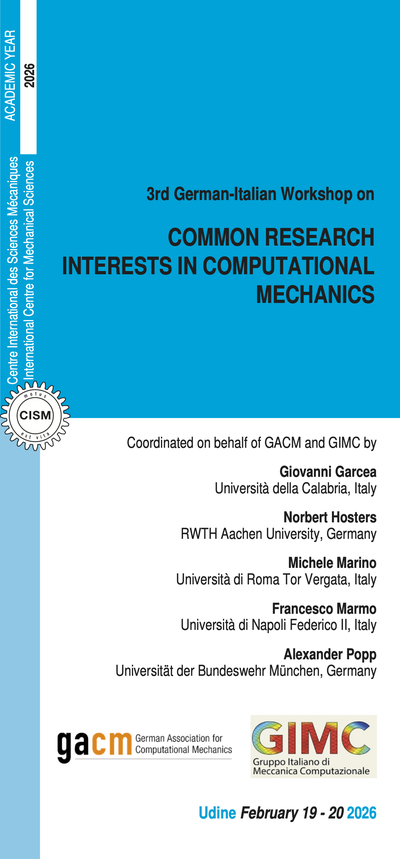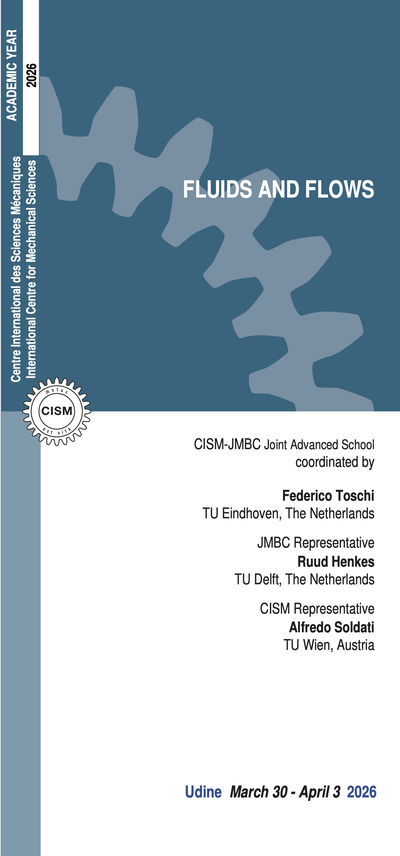Under the auspices of EFCE's Working Parties on Crystallization and on Multiphase Fluid Flow
The aim of the course is to survey and discuss the role of fluid dynamics and turbulence on particle formation processes in crystallization and precipitation with a particular focus on primary nucleation, growth and aggregation. Crystallization is a separation process, widely applied in the chemical and pharmaceutical industries, that exploits the limited solubility of a compound in a solvent under certain conditions.
A change of these conditions to a state of lower solubility leads to the formation of a crystalline solid. Precipitation is instead defined as the rapid formation through a chemical reaction of insoluble solid particles from a liquid solution, often under high supersaturation conditions. Both processes involve the occurrence of primary nucleation (solute molecules or atoms dispersed in the solvent start to gather into clusters, which constitute the nuclei) and subsequent growth (size increase of the nuclei that become stable by achieving the critical cluster size) of particles, together with secondary processes, such as aggregation. Crystallization and precipitation have been long applied to generate a solid from a supersaturated solution. The final product quality is determined by many factors, the particle size distribution and particle morphology being among the most important. In turn, these properties are influenced by parameters such as the operating pressure and temperature that control supersaturation and, therefore, nucleation and growth rates. The competition between these phenomena dictates the final particle morphology and size: if nucleation is favored over growth, small particles are produced and viceversa. Aggregation has a strong influence on the final product quality at moderate to high particle loadings (typically from 1 to 10% in terms of the solid volume fraction) that correspond to the standard operating conditions of industrial crystallization equipment.
The role of fluid dynamics and turbulence in crystallization and precipitation processes is crucial as it affects the creation and redistribution of supersaturation through mixing, it influences the local nucleation rate and gives an important contribution in determining the final nucleation and growth rates. Secondary processes are also strongly influenced by fluid dynamics. In fact, the driving force for secondary processes is the shear rate, which is of course determined by the flow and turbulence fields in the vessel of the crystallization/precipitation reactor. Due to the practical importance of such effects, efforts have been made to understand how fluid flow and mixing impact on the overall crystallization/precipitation process (considering, for instance, reactive crystallisation/precipitation and antisolvent crystallization/ precipitation with supercritical fluids applied as the antisolvents). In particular, mechanistic models, computational fluid dynamics and population balances (including the method of classes and the method of moments) have been widely applied to investigate the elementary subprocesses (macro-, meso-, micro-mixing, chemical reaction, nucleation, growth and aggregation of particles), trying to characterize the corresponding time constants (which must be known to provide proper modeling and scale- up of the overall process).
Lectures will provide an overview of the current state of the research in the field, including both experimental and computational studies. Particular emphasis, however, will be given to modelling and numerical simulation approaches: Different approaches, characterized by a different level of accuracy and computational costs, will be presented and discussed. In particular, homogeneous models will be compared with computational fluid dynamics models, highlighting potentials and limitations. Lectures will also show, in the context of industrially- relevant practical applications, to what extent the approaches discussed in this course can be applied to “design” particles.
The course delivers a comprehensive overview of mixing and fluid mechanics effects on particle primary nucleation and aggregation for crystallization processes and hence will be particularly attractive to graduate students, PhD candidates, young researchers and faculty members in applied physics and (chemical, mechanical) engineering.
The advanced topics and the presentation of current progress in this very active field will also be of considerable interest to many senior researchers, as well as industrial practitioners having a strong research interest in understanding the multiscale complex behavior of such processes, with particular emphasis on their modelling and simulation.
M. Soos, D. L. Marchisio, J. Sefcik (2013) Assessment of gel formation in colloidal dispersions during mixing in turbulent jets, AIChE J, 59, 4567-4581.
Marchisio D.L., Fox R.O. (2013) Computational models for polydisperse particulate and multiphase systems, Cambridge University Press: Cambridge.
Myerson A.S. (2002) Handbook of Industrial Crystallization, Butterworth Heinemann: Boston.
Sandkuhler P., Lattuada M., Wu H., Sefcik J., Morbidelli M. (2005) Further insights into the universality of colloidal aggregation, Advances in Colloid and Interface Science, vol. 113, pp.65-83.
Babler M.U., Biferale L., Brandt L., Feudel U., Guseva K., Lanotte A.S., Marchioli C., Picano F., Sardina S., Soldati A., Toschi F. (2015) Numerical simulations of aggregate breakup in bounded and unbounded turbulent flows, J. Fluid Mech., vol. 766, pp. 104-128.
Cyrus K. Aidun & Jonathan R. Clausen, Lattice-Boltzmann method for complex flows, Annual Review of Fluid Mechanics, Vol 42, p439, 2010.
J.J. Derksen, Simulations of solid-liquid mass transfer in fixed and fluidized beds, Chemical Engineering Journal, Vol 255, p233, 2014.
C. Pirkle, L. C. Foguth, S. J. Brenek, K. Girard, and R. D. Braatz. Computational fluid dynamics modeling of mixing effects for crystallization in coaxial nozzles. Chemical Engineering and Processing: Process Intensification, 97:213-232, 2015.
4 lectures on: Derivation of breakage and aggregation rates from simulations. Fluid-particle interactions and their influence on the processing of colloids and micrometer sized particles in crystallization processes.
4 lectures on: Population balance models for crystal nucleation and growth. Coupling with CFD: potentials and pitfalls. Optimal design of pharmaceutical crystallizers.
4 lectures on: Introduction to fully-resolved simulations for multiphase flows. Fully-resolved solid-liquid simulations. Application of fully-resolved simulations to aggregation and breakage.
4 lectures on: Introduction to the course. Introduction on turbulence and particle-turbulence interaction. Theory of turbulent particle aggregation and breakage. Point-particle approach to turbulent aggregation and breakage. Derivation of breakage rates from simulations (anisotropy, inertial and ductility effects).
4 lectures on: Theory of population balances in the context of multiphase flow. Euler-Euler methods for multiphase flows. Quadrature-based moment methods for population balances.Example applications.
4 lectures on: Kinetics of mixing-controlled particle formation processes. Aggregation and clustering in colloidal and molecular system.
* Italian VAT is 22%.





